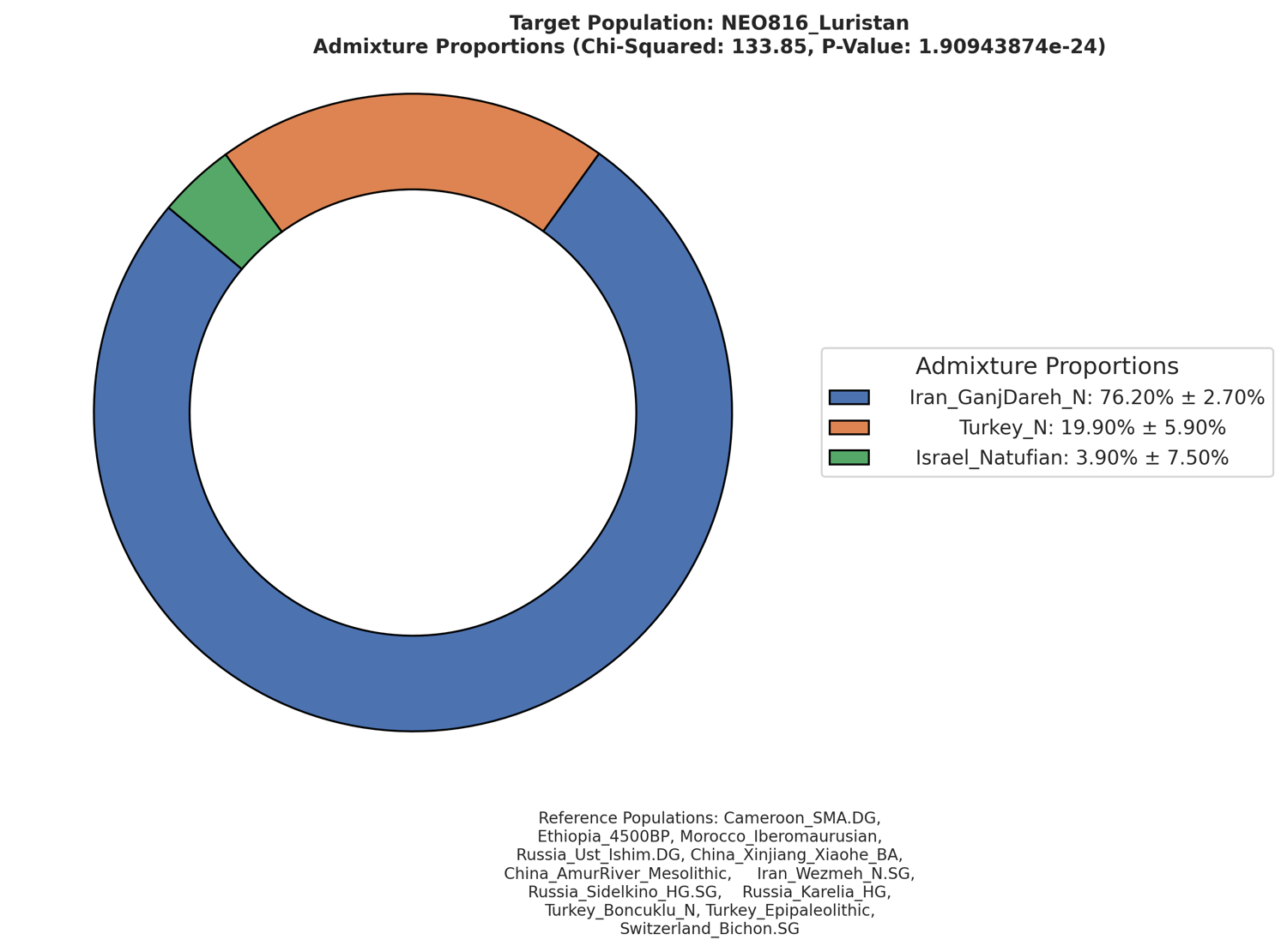
Luristan pre Pottery Neolithic raw genome 23andme
The Pre-Pottery Neolithic period in West Iran, spanning approximately 10,000 to 7,000 BCE, marks a transformative era in human prehistory. This period was characterized by the transition from mobile hunter-gatherer lifestyles to settled farming communities. Evidence from sites such as Ganj Dareh and Tepe Asiab demonstrates early experiments with animal domestication, particularly goats, and the cultivation of cereals like barley and wheat.
Small, permanent or semi-permanent villages began to emerge in the Zagros Mountains and adjacent plains. Early domestication of goats is well-documented, with evidence of selective breeding at Ganj Dareh. The development of surplus food likely supported more complex social structures, including proto-chiefdoms.
The sample we are going to talk about in this video comes from Luristan and dates to 68 centuries BCE. QPADM analysis suggests this individual descends mainly from Iranian Neolithic Farmers. The population he represented was likely one of the foundational components of later Elamites.
He carried Y lineage J2a, which is commonly found in Iran nowadays.
